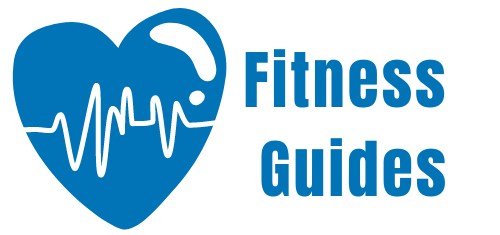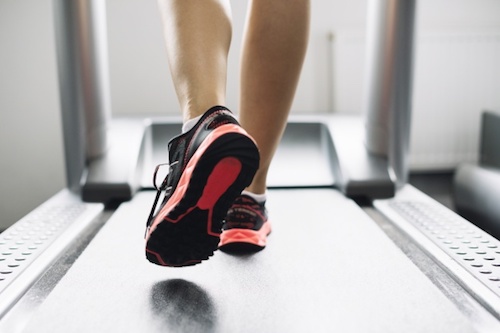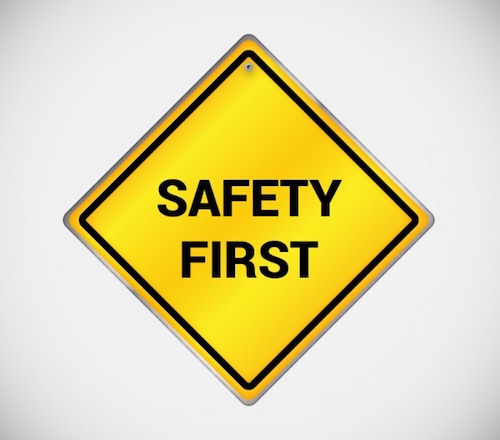The treadmill has rapidly become one of the most popular fitness machines. One of the reasons is that it thoroughly exercises most body muscles at once. Besides, it offers you the chance to improve your cardiovascular system, your endurance, and your overall tone.
That said, it’s important to learn how to use a treadmill the right way if you want to make the most of your workouts.
How to Use a Treadmill as a Beginner
Without any further ado, let’s see the basic steps of using a treadmill:
Table of Contents
1. Talk with Your Doctor
The first thing you want is to consult your GP and make sure there aren’t any contraindications of you getting on a treadmill. If you have underlying joint problems, heart issues, severe breathing difficulties or if you’re just recovering from surgery, this might not be the best time to use a treadmill.
2. Get the Right Equipment
You’ll need the proper equipment to minimise the risk of accidents. As such, we recommend fitted sports clothing, moisture-wicking socks and sports shoes with a comfortable sole, that will cushion your feet. Don’t use jeans, sandals, stilettos or shoes with an outsole that doesn’t bend because your workout will be particularly uncomfortable, if not altogether risky.
3. Read the Instructions Manual
Before you actually step on the treadmill, it’s best to read its user manual and all the instructions available. Even if there are similar features on all the treadmills, like, for example, the way you make the various selections, or where you start them, it’s still a good idea to make sure you know what every button on the control panel does.
4. Safety First
Considering safety is the main concern when using a fitness machine, it’s best you know what the safety features are. Each machine has an emergency stopping mechanism, usually in the form of a button. This should stand out from the others, but we advise you to test it first to make sure it actually works.
5. Ready, Steady, Go!
You don’t want to start off with a speed that might prove to be too much for you. A good way to start is to stand on the side rails of the treadmill and set the speed to about 2 miles per hour. That allows you to understand how fast the running band is moving and to set your starting point.
6. Don’t Jump on It
Even if the speed doesn’t seem like much, don’t just jump on the treadmill. Grab the handrails, lower your feet on the belt one by one, and start moving along. Once you feel alright with the feeling of the earth moving without you, you can slowly release the handrails and walk along.
The reason why we advise you not to hold on is that it can involve certain issues like:
- Burning calories at a lower speed
- Decreasing the cardiovascular benefits
- Forcing a poor posture
- Not exercising the muscles correctly
- Increasing the chances of getting strains or sprains
- Not improving your balance
- Decreasing your ability to self-adjust your movements
7. Warm Up
It’s better not to start abruptly, but to ease in a workout, regardless of your fitness level. So start with a normal walk, at a regular speed of 3 miles per hour. You should maintain a good posture while you’re doing this, with your shoulders back, slightly flexed knees and eyes forward. Also, make sure you don’t navigate too far from the center of the belt. After that, you can increase the speed as you feel more limber, but don’t forget to cool down as well.
8. Choose a Program
If you don’t know exactly how to program your workout, you can always choose one of the preset programs. That way, you can get through all the phases of warming up, exercising and cooling down in a comfortable, precise way.
9. Go with the Flow
After you’ve managed to walk without falling, you can step it up a notch and up the speed. Start with a light jog and then move on to more vigorous running, making sure you can handle yourself on the moving machine.
If you have included hand weights or resistance bands, we advise you to incorporate those into your training as well. Once you’re comfortable with a certain speed, you can always add these to increase the level of difficulty and to tone your upper body as well.
10. Choose an Incline
You can set your incline with most treadmills to get a more challenging workout without having to increase the speed. So select an incline that works for you, but remember to let go of the handrails once you’re comfortable with the new angle.
Remember the issues we discussed above that stem from holding on to the bars? Well, this time they’re worse because tackling an incline means your body has to adopt the proper position, with your knees bent, leaning forward from the hips. And if you’re using your hands to hold on to something, you’ll actually lean back, putting a strain on your spine and hips, apart from underexercising your muscles.
11. Stop
You can actually stop the treadmill in various ways, but the best is to slowly decrease the speed to cool down, then continue with the decreased speed until the treadmill stops altogether. If you want to get down fast, press the emergency stop button for a more forceful stop, but we suggest this only in case of emergencies.
There’s also the pro-way to get down a moving treadmill, and that’s by taking a hold of the handlebars, moving your feet up to the side rails again, and then stopping the machine. However, doing it this way will leave this weird, nauseating feeling, so make sure you always hold on the handlebars to get down.
Final Thoughts
We’ve given you a series of advice on how to use a treadmill and how to plan your workouts in order to maximize your results. With that in mind, make sure you’re not pushing yourself too hard. At least, not as a beginner.
Overtraining is a real issue, and you need to allow your body the proper time to heal. So don’t use the treadmill every day, unless you’re just plain walking. Otherwise, 3 to 4 times per week is more than enough to reap all the benefits it has to offer.
Now that we’re done, tell us a bit more about you. What is the main reason you want to use or buy a running machine? What do you fear the most about using one?
- At What Incline Should You Walk on a Treadmill? - August 29, 2022
- 7 Best Budget Exercise Bikes (under £200) - April 5, 2022
- 6 Best Compact Treadmills for Small Spaces - April 5, 2022


